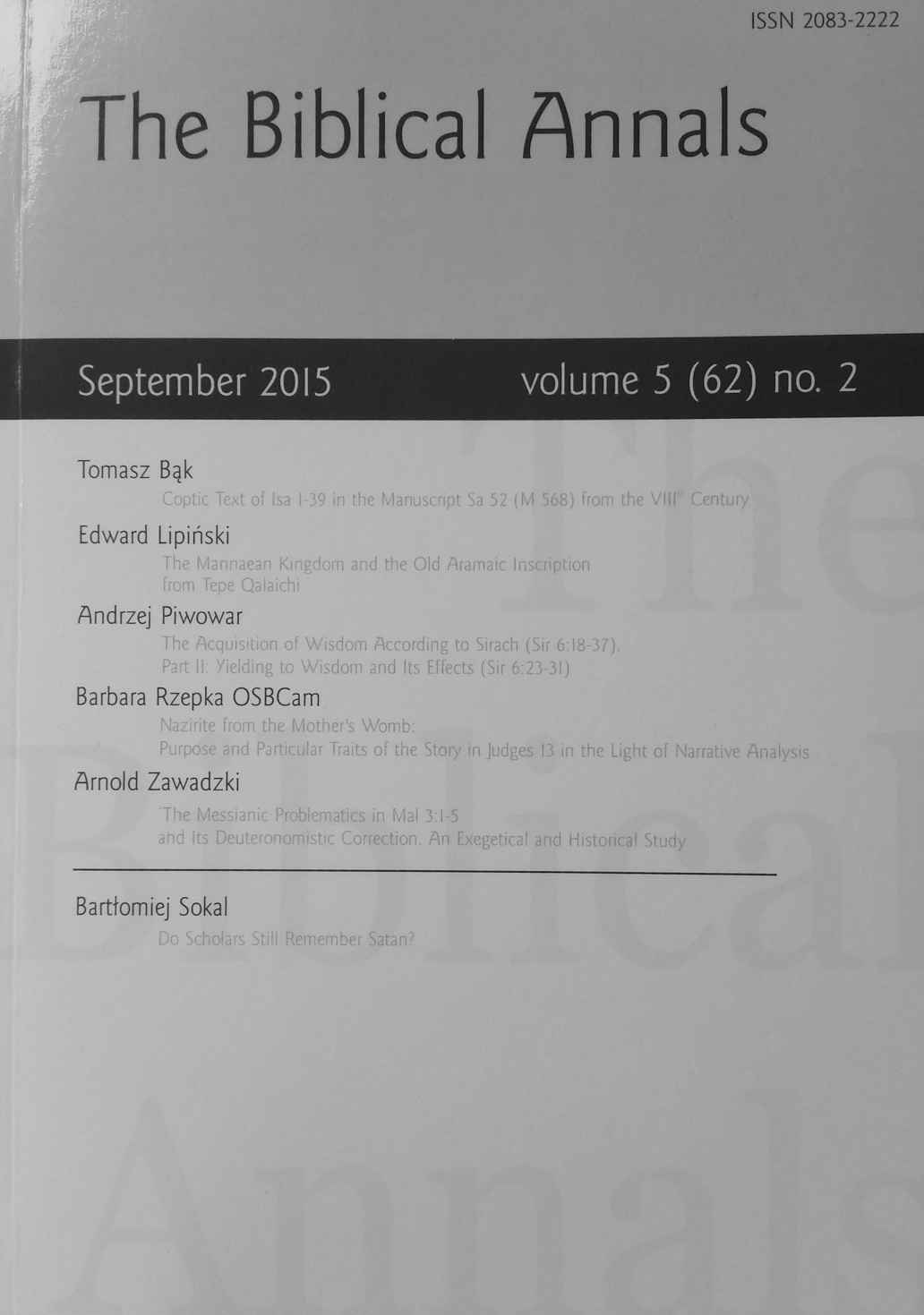Królestwo Mannaj i staroaramejska inskrypcja z Tepe Kalajczi.
The Mannaean Kingdom and the Old Aramaic Inscription from Tepe Qalaichi.
Author(s): Edward LipińskiSubject(s): History, Language and Literature Studies, Jewish studies, Theology and Religion
Published by: Katolicki Uniwersytet Lubelski Jana Pawła II - Wydział Teologii
Keywords: Mannay; Tepe Qalaichi; curses; biblical parallels; Israel diaspora in Assyria;
Summary/Abstract: It was first heard of a Mannaean kingdom from the Bible, in Jer. 51:27, andmore information became available only in the 19th-20th centuries with the publication of Neo-Assyrian and Urartaean tablets. An important piece coming from the kingdom itself was added to our sources by the publication of an Old Aramaic inscription from Tepe Qalaichi, south-east of Lake Urmia, probably the site of the Mannaean capital city, the Assyrianized name of which was Izirtu. The stele discovered in 1985 only preserves the final part of a longer text with imprecations against any king usurping the stele. Among the curses one finds an interesting reference to earthquakes. The rectified decipherment provides a running text, datable by palaeography to the later part of the 8th century B.C.:1) ‘Whoever would drag away this stele [and withhold it]2) in war or in peace, any kind of pestilence, [as]3) much as there is on the whole earth, may the gods impose on the [coun]try4) of that king. And may he be accursed to the gods and may he be accursed5) to Ḫaldi who is in Za‘ter. May seven cows6) nurse one calf and may it not be satiated. And may seven7) women bake in one oven and may they not fill8) it. And may vanish from his country the smoke of a furnace and the sound of9) a mill. And may his land be salted and may sway back and forth10) in it the crack of an earthquake. And that king who would [write]11) on this stele, may Hadad overturn his throne,12) as well as Ḫaldi. And during seven years may Hadad not send thunder13) in his country and may the entire curse of this stele smite him.’These curses contain no reference to encroachments of treaty clauses and they certainly cannot be regarded as the final section of a treaty. They rather close a eulogy of the ruling monarch, comparable to the Phoenician inscription of Kulamuwa. However, they seem to reveal a situation disturbed by internal competitions in the Mannaean kingdom, echoed in Neo-Assyrian texts of Sargon II. The oracle of Jer. 51:27 ff. has another background. It seems to have been originally directed against Assyria and to date from the time of Esarhaddon, when the Mannaeans with Urartu, the Scyths, and the Medes were opposing Assyria.
Journal: The Biblical Annals
- Issue Year: 5/2015
- Issue No: 62/2
- Page Range: 307-318
- Page Count: 12
- Language: English, Polish

